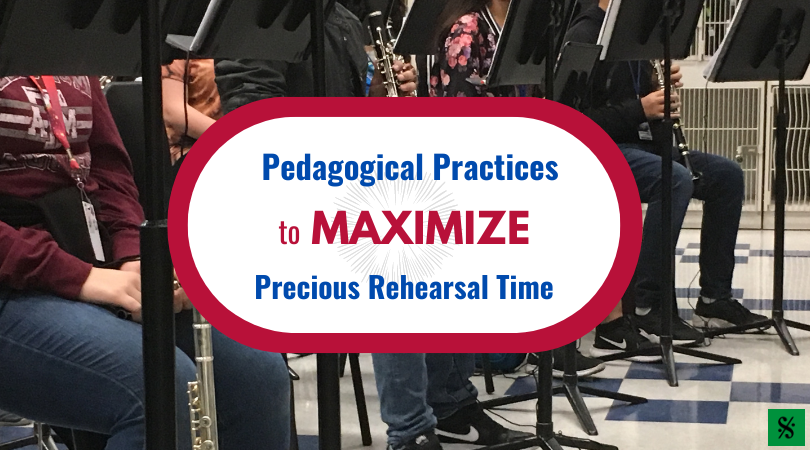Struggling with producing a good tone on the flute can be frustrating for students of all levels. As a band director or private teacher, it is vital that we guide our students towards producing a better sound before they give up in desperation. Through this article, I will detail many possible solutions to your flutists’ tone woes in hopes of providing tools that will lead them to their best possible sound.

When troubleshooting flute sound production, first try your student’s flute. Check for leaks in the common places (trill keys, F key, foot joint, etc.). While checking for leaks, ensure that the flute headjoint is aligned correctly to the body of the instrument. The middle of the headjoint tone hole should line up with the middle of the first key of the left hand. If no problems exist with the instrument or alignment, have the student play a few notes and notice their body and hand positions.
Many errors that contribute to poor flute tone have to do with the angles created when holding the flute. As an asymmetrical instrument, the proper playing position of the flute is important for good tone. Influential angles to assess:
- Horizontal angle in relation to the ceiling (too high or low?)

90° angle approximately. A little greater is acceptable.
- Angle in relation to the body (too close or far?)

Angle of the flute in relation to the body: not too close nor too far.
- Angle of aperture hole to lip (too rolled in or out?)

Cover the embouchure hole no more than 1/3 of the way with the bottom lip. Avoid rolling in or out too much.
- Head placement (chin too far up or down? And, too far forward or back?)

Chin/head angle up and down (raise the crown of the head towards the ceiling). Chin/head angle front and back (bring the flute to you).
- Arms (too close or far from the body?)

Arms neither too close nor too far from the body. Elbows point towards the floor.
- Placement of flute on the lip (too high or low? And, covering too much or little of the tone hole?)

Placement of flute on the bottom lip: neither too high nor too low.
Each of these angles can be played around with in the spirit of trial and error exploration. Much like the story of Goldilocks and the Three Bears, each student must find the “just right” position for them. Consider that what works best for you might not be what works best for your student. Have them play around until they find the sweet spot that makes the tone sound as good as possible.
After checking if any angle adjustments improve the tone, assist your students with ideal embouchure formation. Are their corners pulled back into a smile? This will cause added muscle tension and lead to poor tone and less lip flexibility. Instead, have them relax their corners and make a flute embouchure as if they were saying the word “what”. The “wh” syllable puts the mouth in a fairly good position for playing. Have them look at photos of good (and famous!) embouchures, and compare to their own in a mirror. (See pictures in this article.)
Then, assess the shape of the aperture between their lips. If it’s too big, they will have an airy sound and lose air quickly. If it’s too small, the sound will be pinched or they might create a lip buzz. Next, if their sound is ok, but doesn’t resonate or project much, have them experiment with dropping the jaw and making a more open space between their top and bottom teeth. Usually, students tend not to create enough space inside their mouths for the best resonation. Also make sure their tongue is on the bottom of their mouth, and not in the way of the air escaping the embouchure.
Other issues to consider are air speed and direction. If a flutist cracks notes frequently, there are three possible problems with both parameters. If they are trying to play a low register note and crack to the note higher, their air is either too fast, too high, or both. If they are trying to play a high register note and crack to the note lower, their air is either too slow, too low, or both. Further problems with tone can be caused by poor posture, incorrect or shallow breathing, low air quantity, or not enough pressure of the flute on the chin from the base of the left pointer finger.
It’s also important to mention that the cut of a headjoint tone hole can also drastically affect the sound. Many beginner model flutes have headjoints that provide too much resistance and are physically difficult to play. Encourage your students to try many different flute brands in their price range before settling on an instrument that’s best for them.
My favorite tone exercises, explanations, and diagrams are found in Trevor Wye’s Practice Book 1: Tone. In it, Wye guides flutists through a thoughtful discovery of their best sound in all registers and I find it helpful to use with students of all ages and levels. A great side benefit to your flute students having a better sound is improved intonation. (More on flute intonation here.) The best sound is also usually the most in tune sound! After all, the first thing people notice when listening to an instrument is the quality of the tone. Spending practice time on dedicated exercises for improving it can be extremely beneficial to the overall growth and confidence of a flutist.
Erin Kendall Murphy holds performance degrees from the University of Michigan (BM), Northwestern University (MM), and the University of Wisconsin-Madison (DMA). She is the Instructor of Flute at Lamar University and performs with the Analogue Duo and Lakeshore Rush ensemble. Visit www.erinkmurphyflute.com for more information.
Related Reading:
Learning the Play the Flute in Tune (Part 1)
Start Your Beginner Flutes the Right Way
4 Flute Hacks to Develop Good Habits
If you would like to receive our weekly newsletter, sign up here.
Don’t forget to like us on Facebook too!
Learn. Share. Inspire.
BandDirectorsTalkShop.com






Leave a Reply
You must be logged in to post a comment.